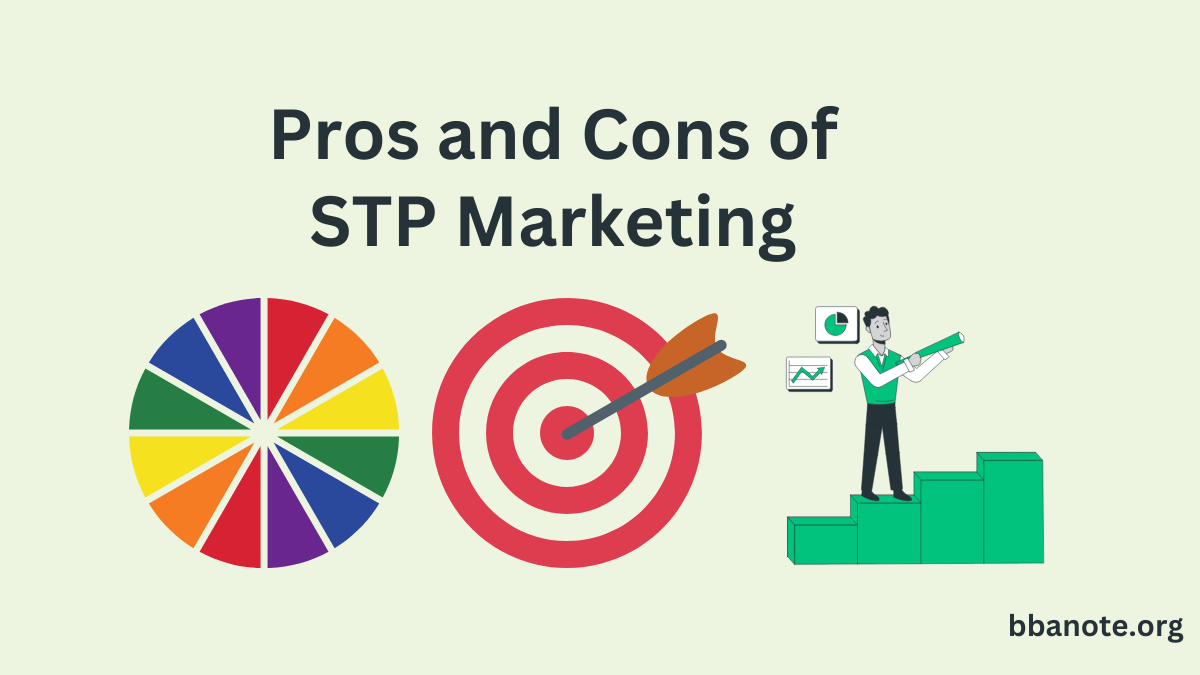Pros and Cons of STP Marketing
In this article, we will explore the pros and cons of STP i.e. segmentation, targeting, and positioning which is the most important marketing strategy in this modern time. Let’s explore:
Pros of STP Model
STP Marketing – Segmentation, Targeting, Positioning – is an effective approach for businesses to enhance their marketing efforts. Here are 8 significant advantages of implementing the STP model:
Detailed Targeting
STP helps businesses identify and focus on specific customer segments that are most likely to buy their products or services. This accuracy reduces marketing waste, as you’re not spending resources on audiences unlikely to convert. It maximizes your chances of reaching those who genuinely need what you offer.
Enhanced Product Development
Segmentation allows you to tailor your products to meet the unique needs and preferences of different customer groups. When your products align closely with customer desires, they are more likely to be successful in the market, resulting in higher sales and customer satisfaction.
Read More: Market Segmentation
Improved Customer Engagement
Targeting specific segments enables you to create personalized marketing messages that resonate with each group. Customers are more likely to engage with and respond positively to messages that address their individual concerns and interests, leading to stronger brand-customer relationships.
Efficient Resource Allocation
STP helps you allocate your marketing resources, such as budget and manpower, to where they will have the most impact. Efficient resource allocation ensures you get the best return on investment (ROI) by focusing your efforts where they matter most, increasing profitability.
Competitive Advantage
By targeting segments that competitors may overlook, you can establish a unique position in the market. This competitive edge allows you to differentiate your brand and capture market share, even in crowded industries.
Read More: 4 Strategies For Market Targeting
Higher Conversion Rates
Targeting the right audience increases the likelihood of turning potential customers into actual buyers. Improved conversion rates mean more sales opportunities and revenue for your business.
Enhanced Customer Loyalty
When customers feel that your brand understands and caters to their needs, they are more likely to remain loyal. Building a loyal customer base can lead to repeat business, positive word-of-mouth, and long-term success.
Better Marketing ROI
The combination of precise targeting, efficient resource allocation, and increased conversion rates leads to a higher return on your marketing investment. Ultimately, STP marketing helps you achieve better financial results by optimizing your marketing spending and generating more revenue.
Read More: Positioning in Marketing
Cons of STP Marketing Model
STP Marketing (Segmentation, Targeting, Positioning) offers numerous benefits to businesses, as discussed earlier. However, like any strategy, it comes with its drawbacks. Here are 6 notable cons of STP marketing:
Complexity and Resources
Implementing STP marketing requires substantial time, effort, and resources. Businesses need to collect and analyze data, create tailored marketing campaigns, and manage multiple segments. Small businesses with limited resources may find it challenging to execute STP effectively, potentially leading to inefficient marketing efforts.
Read More: Organizational Market Segmentation
Risk of Overlooking Opportunities
Focusing too narrowly on specific segments may cause businesses to overlook potential customers or emerging market trends outside their chosen segments. While specialization can be beneficial, it also carries the risk of missing out on broader market opportunities, limiting growth potential.
Increased Marketing Costs
Crafting personalized campaigns for different segments can be costly, especially when considering design, content, and distribution. Higher marketing expenses can eat into profit margins, making it challenging for businesses to maintain profitability, especially if the segmentation is not well-targeted.
Read More: 8 Pros and 7 Cons of Behavioral Segmentation
Potential Customer Alienation
In some cases, businesses may inadvertently alienate customers outside their chosen segments by creating content or products that don’t resonate with them. Alienating potential customers can harm the brand’s reputation and lead to missed sales opportunities.
Data Privacy Concerns
Effective STP often relies on collecting and using customer data. Businesses must navigate privacy regulations and gain customer trust. Mishandling data or privacy concerns can lead to legal issues and damage customer relationships.
Segment Saturation
In highly competitive markets, all businesses may target the same lucrative segments, leading to saturation. Intense competition within specific segments can result in price wars and reduced profitability.
Read More: 15 Examples of Psychographic Segmentation
Arti Kushmi holds a BBS (Bachelor in Business Studies) degree and shares her business and marketing knowledge through this website. While not writing she will be reading and enjoying the moment.
